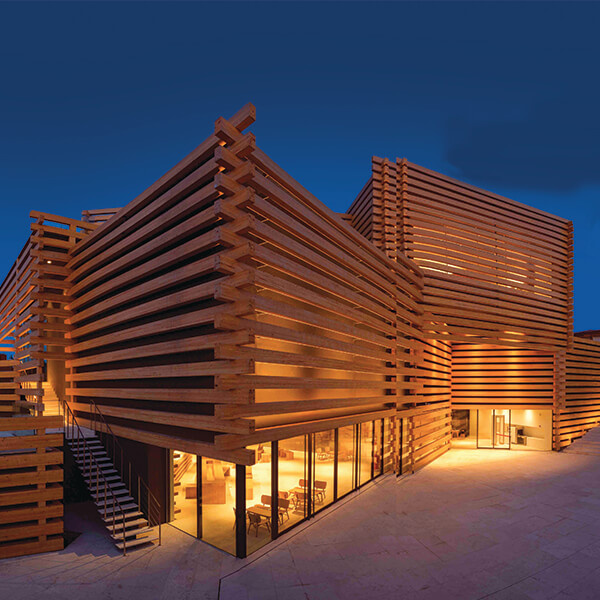Architectural Aesthetics: A Deep Dive into the Beauty of Building Design
Core Principles of Architectural Aesthetics
Harmony and Proportion Harmony is the balanced relationship between different elements in a structure, where no part is excessively dominant over others. Aesthetically pleasing buildings often follow classical principles of proportion, such as the Golden Ratio or Modular Proportioning, which create a sense of natural order and symmetry. These ratios and relationships make designs feel balanced, organized, and ultimately, more appealing.
Unity and Coherence Unity is achieved when all architectural elements – including shapes, colors, materials, and textures – contribute to a cohesive visual experience. In coherent designs, individual parts align with an overarching concept or theme, allowing people to perceive the building as a single, integrated form. Consistency in theme and material choice is key to creating unity.
Functionality and Usability The beauty of architecture is deeply intertwined with functionality. A well-designed building not only looks beautiful but serves its purpose efficiently. Architectural aesthetics considers ergonomics, space utilization, and accessibility, ensuring that form and function work harmoniously to enhance user experience.
Contextual Integration An aesthetically pleasing building often respects its environment and integrates seamlessly within its setting. By aligning with local styles, cultural themes, and the natural landscape, architects can create designs that feel authentic and harmonious with their surroundings. This principle, also known as site-specific design, ensures that structures enhance rather than disrupt the existing landscape.
Innovation and Creativity While aesthetics often draw from established styles, creativity and innovation play crucial roles in evolving architectural beauty. Modern architecture frequently pushes boundaries with unconventional materials, novel shapes, and futuristic technologies, showcasing the potential for aesthetics to break free from traditional constraints and inspire new perspectives on beauty.
Key Elements Contributing to Architectural Aesthetics
Form and Shape Form is the overall structure and shape of a building, including its height, width, and volume. Shape can be influenced by symmetry, geometry, and even organic forms that mirror natural patterns. Elements like curved facades, sharp angles, or flowing lines bring dynamism to architecture, making buildings stand out as both art and functional space.
Texture and Material Materials play a significant role in defining a building’s texture and tactile appeal. The choice of materials – whether they are rough like brick or stone, smooth like glass, or warm like wood – affects how light reflects on the structure and how it feels to touch. Contrasting textures can create visual interest, while natural materials often evoke warmth and sustainability.
Color Color impacts mood, perception, and character. Neutral tones may evoke calm and sophistication, while vibrant hues add energy and personality. Architects use color to highlight certain aspects of the building, create focal points, or make structures blend in or stand out within their environments.
Light and Shadow Light is a powerful aesthetic tool in architecture, transforming spaces and enhancing textures. Natural light is often harnessed through strategic window placement, skylights, and open spaces to create bright, inviting interiors. Meanwhile, shadows add depth and contrast, creating dynamic changes in appearance throughout the day.
Ornamentation and Detailing Ornamentation – like carvings, moldings, and engravings – is often used to enhance the beauty of a building. It can vary from intricate Gothic gargoyles to minimalistic line details in modern architecture. Although contemporary design leans toward minimalism, many architectural styles still use ornamentation to add richness and historical context.
Green and Sustainable Features As sustainability becomes integral to architecture, green roofs, vertical gardens, and eco-friendly materials have become aesthetic elements in themselves. These features enhance both the beauty and functionality of structures, adding a modern appeal and conveying a commitment to environmental responsibility.
The Impact of Architectural Aesthetics on Society and Individuals
Enhancing Quality of Life Beautiful buildings have a profound impact on the quality of life for those who live and work within them. Studies show that aesthetically pleasing environments improve mental well-being, productivity, and creativity. Architectural aesthetics contribute to a sense of pride and belonging, making people feel happier and more connected to their surroundings.
Creating Cultural Identity Architectural aesthetics are deeply tied to cultural expression and historical identity. Styles like Baroque, Art Deco, or Minimalism reflect different eras, philosophies, and social values. By incorporating these aesthetics, architects preserve cultural heritage and express regional character, fostering a sense of place and identity.
Boosting Economic Value Attractive buildings often enhance the economic value of the area by attracting residents, tourists, and businesses. Iconic structures like the Sydney Opera House or the Eiffel Tower draw millions of visitors annually, demonstrating how aesthetic appeal can elevate a city's cultural and economic profile.
Promoting Environmental Awareness As sustainable and green architecture grows in popularity, architectural aesthetics increasingly showcase environmental consciousness. Eco-friendly designs like green facades and solar panels educate the public on the importance of sustainability. Aesthetic features like green walls and energy-efficient glass also encourage communities to support eco-conscious development.
Encouraging Innovation and Creativity in the Built Environment Aesthetically striking architecture challenges norms and inspires creativity within urban planning. Landmark buildings such as Zaha Hadid’s curvaceous designs or Frank Gehry’s deconstructed forms inspire future generations of architects to push the boundaries of traditional architecture.
Architectural Aesthetics in Different Architectural Styles
Classical Architecture Emphasizing symmetry, proportion, and balance, classical architecture is known for its columns, pediments, and domes. Structures like the Parthenon in Greece and the Pantheon in Rome exemplify this style, focusing on harmony and timeless beauty.
Gothic Architecture Gothic architecture uses vertical lines, pointed arches, and elaborate ornamentation to evoke a sense of grandeur and spirituality. Cathedrals like Notre-Dame in Paris are classic examples, with their stunning stained glass windows and intricately carved facades.
Modernist Architecture Modernist architecture focuses on simplicity, minimalism, and functionalism, often rejecting ornamentation. Buildings like the Villa Savoye by Le Corbusier showcase this style with their clean lines, open floor plans, and emphasis on form following function.
Postmodern Architecture Postmodernism combines past styles with a playful, sometimes ironic twist, often embracing eclectic designs and bold colors. It seeks to break away from rigid modernist principles and encourages individuality, as seen in buildings like Michael Graves’ Portland Building.
Contemporary and Sustainable Architecture Today’s architectural trends emphasize sustainability, adaptability, and community integration. Structures like Bosco Verticale in Milan or The Edge in Amsterdam demonstrate that architectural aesthetics can be both beautiful and eco-friendly, providing functional spaces that prioritize the environment and modern needs.
Architectural aesthetics are the soul of building design, imbuing structures with beauty, purpose, and personality. From harmony and proportion to innovative green designs, aesthetics in architecture continuously evolve, reflecting cultural shifts, environmental priorities, and human creativity. Through thoughtful and purposeful design, architects create not just buildings but enduring pieces of art that shape the identity and experience of cities and communities worldwide.
This article is for informational purposes only and does not constitute professional advice.



Hiç yorum yok: